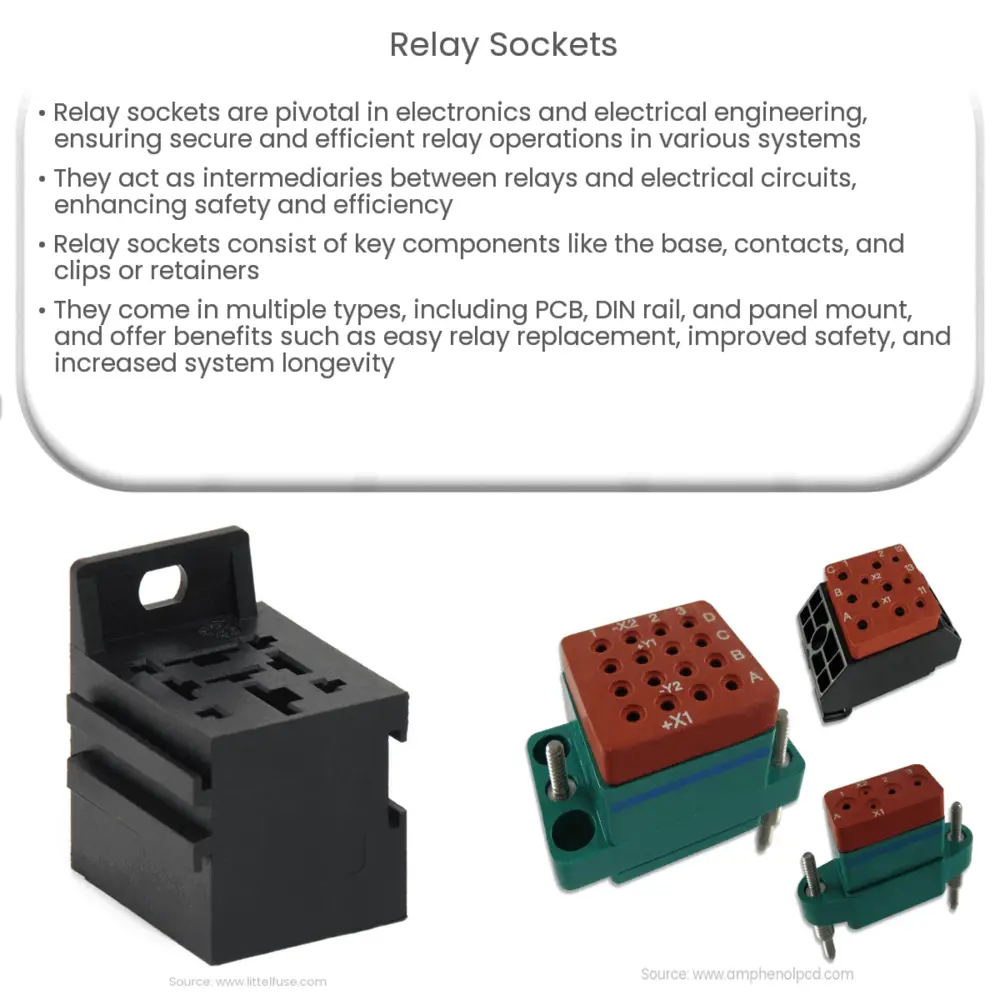Explore the world of relay sockets, their types, benefits, applications, and key components in this comprehensive guide.

Understanding Relay Sockets
Relay sockets play an essential role in various industrial and commercial applications, particularly in electronics and electrical engineering. Understanding the functionality, purpose, and application of relay sockets can contribute significantly to the successful operation and maintenance of numerous systems.
Definition of Relay Sockets
A relay socket is a device that acts as an intermediary, facilitating the connection between a relay and an electrical circuit. Relay sockets provide a secure platform for relay integration, ensuring that the relay is safely installed and connected to the appropriate circuit. These devices are designed to easily accept and hold relays, thus playing a crucial role in the system’s safety and efficiency.
Key Components of Relay Sockets
Relay sockets typically consist of several key components. These include:
- Base: The base is the part of the relay socket that directly interfaces with the circuit board or wiring panel. It often features screw or spring terminals for secure electrical connections.
- Contacts: Contacts are the conductive parts that create a connection between the relay and the socket. They ensure proper current flow from the socket to the relay when activated.
- Clips or Retainers: These elements are used to hold the relay securely in the socket. They prevent the relay from falling out or moving around during operation.
Common Types of Relay Sockets
Relay sockets come in various types, each designed to accommodate a particular kind of relay. Understanding the different types of relay sockets can help you make informed decisions based on the specific requirements of your project or application.
- PCB Relay Sockets: As the name implies, these sockets are intended for use with printed circuit boards (PCBs). PCB relay sockets are soldered directly onto the PCB, providing a reliable connection for PCB-mounted relays.
- DIN Rail Relay Sockets: These sockets are designed to be mounted on DIN rails, which are common in industrial control systems. DIN rail relay sockets are highly versatile and can accommodate a variety of relay types.
- Panel Mount Relay Sockets: These sockets are suitable for relays that need to be mounted on a panel. They come in various sizes and configurations to match a wide range of panel-mounted relay types.
Applications of Relay Sockets
Relay sockets have widespread use in industries such as manufacturing, automotive, telecommunications, and power generation. They provide a secure and easily replaceable connection point for relays, significantly simplifying maintenance and troubleshooting efforts.
Benefits of Using Relay Sockets
Using relay sockets in your circuits comes with several advantages. Firstly, they provide secure mounting and easy replacement of relays, facilitating maintenance procedures and minimizing downtime. Secondly, relay sockets promote safety by offering a defined and stable connection between the relay and the circuit, reducing the risk of accidents and failures. Lastly, they contribute to system longevity, as the ease of relay replacement means individual components can be swapped out without the need for a full system overhaul.
Choosing the Right Relay Socket
Selecting the appropriate relay socket depends on several factors, including the type of relay being used, the mounting method, and the electrical specifications of the system. It’s important to ensure compatibility between the socket and relay in terms of dimensions, pin configuration, and current or voltage ratings. Always refer to the manufacturer’s specifications to make the right choice.
Final Thoughts on Relay Sockets
In the world of electronics and electrical engineering, relay sockets are indispensable. They facilitate the effective operation of relays, which in turn are crucial for managing power flow in circuits. By providing a secure and reliable connection platform, relay sockets ensure the overall safety and efficiency of the electrical and electronic systems in which they’re installed.
Conclusion
In conclusion, the importance of relay sockets in modern electrical systems cannot be overstated. From the automotive industry to manufacturing plants and even in domestic setups, these small devices play a crucial role in ensuring the effective, safe, and efficient operation of various systems. Their adaptability and ease of use make them an excellent choice for a wide range of applications. Understanding their functionality, types, and benefits will undoubtedly serve any electrical engineer or enthusiast well in their projects and tasks. Ultimately, the humble relay socket stands as a testament to the fundamental principles of electrical engineering – simplicity, safety, and efficiency.

